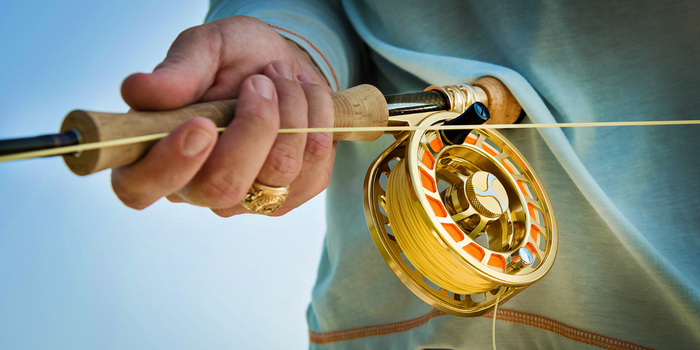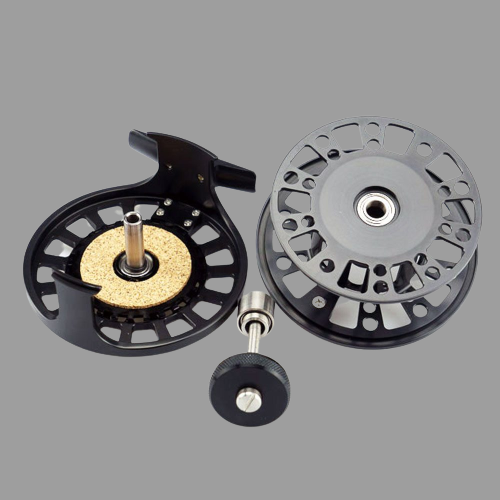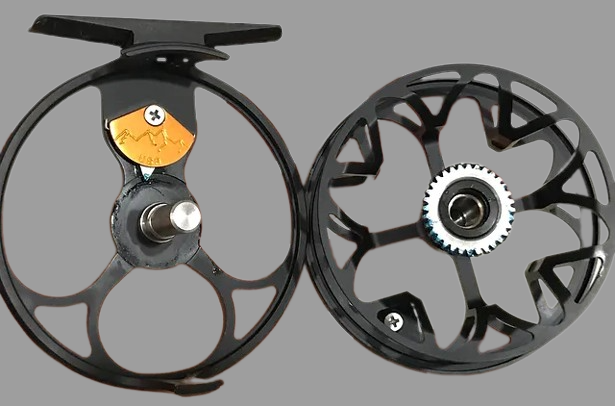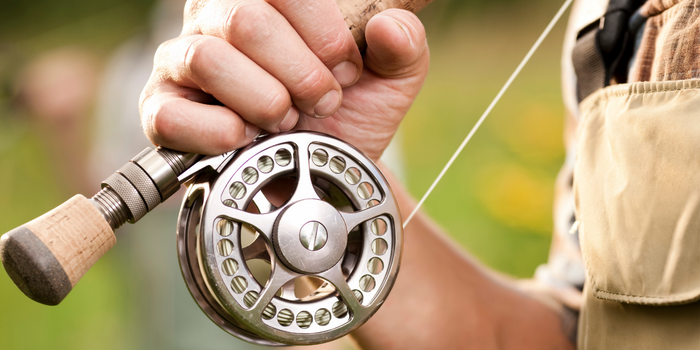I was getting my gear together the other day, and I found myself pondering a question that’s been Tickling my brain for a while now – do fly fishing reels have a drag?
Why am I curious about this particular feature in my fly fishing reel? Well, The drag is a piece of mighty important equipment for reelin’ in the fish. It helps you control the speed at which the line is pulled off the reel, which is mighty important when you’re tryin’ to land that big ol’ trout.
So, I set out on a quest to answer this question once and for all. I researched, asked fellow anglers, and tested my own reel to get to the bottom of things. In this blog post, I’ll let you know the answer to the question with some essential aspects.

Do fly fishing reels have a drag? And Do You Even Need Drag?
Yes, fly fishing reels do have a drag system. There are two main types of drag systems used in fly fishing reels, disc and click & pawl. The disc drag system consists of a set of compressed washers inside the reel that creates resistance when a fish starts swimming. Most fly reels have a decent disc-drag system, and some of the top fly reels exceed the spring-and-pawl systems allowing the fly line to leave the reel in a smooth motion. While drags may not be necessary for small rods, encountering big fish in certain water conditions may require the ability to slow runs.
Table of Contents
Table of Contents
What does drag do on a fly reel?
The drag on a fly reel is a system that controls the amount of resistance a fish feels when it pulls on the line. It allows the angler to control the fish and tire it out over time, making it easier to land.
When a fish takes the fly, it will try to swim away, which creates tension on the line. Without a drag system, the fish could easily pull all the lines off the reel, which could lead to the line breaking or the fish escaping. The drag system provides a way to control the amount of resistance, so the fish can be reeled in gradually and safely.
The drag system works by using a set of washers or a brake mechanism to control the amount of friction on the spool of the reel. As the fish pulls on the line, the drag system applies resistance, which helps to tire out the fish and prevent it from escaping. The amount of resistance can be adjusted using the drag adjustment knob on the reel.
Fly fishing requires anglers to adjust the drag, which is crucial for customizing resistance based on the fish’s size and environmental conditions. If you apply too much resistance, the line may snap, or the fish may tire too soon. Conversely, if you apply too little resistance, it can be tough to control the fish, resulting in a prolonged struggle.
There are several types of drag systems that can be found on fly reels, but the main ones are Disc drag and Click-and-Pawl Drag.
Read more Trout Fishing In The Rain & Is Fly Fishing Harder Than Regular Fishing [Spin Fishing]?
Disc drag

The disc drag system in fly fishing is an important feature that helps to control the movement of the fish and prevent it from running away. This is a machine that uses friction to decrease the speed at which the spool spins, which controls the movement of the fishing line. Here are the benefits and drawbacks of the fly fishing disc drag system.
Benefits:
- Extremely effective
- Smooth operation
- Precise control
- Reduces the likelihood of tangling or breaking the line
- Easier to control fish
Drawbacks:
- Not be suitable for all fishing situations
- Take time to adjust to using a disc drag system
There are two types of disc drag based on different mechanisms:
- Draw Bar Disc Drag – Overall, the best drag
- Sealed Drum Disc Drag – Best for saltwater & muddy areas
1) Draw Bar Disc Drag
Draw Bar Disc Drag is one of the most popular types of drag systems used in fly fishing.
It’s a mechanism that helps to control the line when a fish is fighting. When a fish takes the bait, it’s likely to struggle and put up a fight. And if you don’t have something to control the line, it can easily get tangled and snap. That’s where the Draw Bar Disc Drag comes in.
The mechanism works by applying pressure to the spool of the reel. There’s a disc that is attached to the spool and another disc fixed in place. When you twist a knob, it creates pressure that closes the gap between the two discs. This can be described in a more relatable way.
This pressure then affects the spool and allows you to regulate the speed of the line.
Depending on the size of the fish, you can easily tweak the pressure.
If it is very big, you can tighten the drag to make sure it doesn’t break the line. For a smaller one, you could adjust the tightness to increase the level of difficulty and make it more challenging.
The drag is created by several different parts working in harmony with each other. By selecting alternative words, you could give it a more human touch. There’s the drawbar, which is the piece that attaches to the spool. Then there’s the disc, which is attached to the drawbar and creates pressure. There are also drag washers, which are made of different materials depending on the brand and model of the reel. These washers help to create a smooth drag and prevent any jerking or sudden movements that could cause the line to snap.
2) Sealed Drum Disc Drag
Sealed Drum Disc Drag is easy to use and easier to use.
One of the things that set this type of drag system apart is the fact that it’s sealed. That means it’s protected from dirt, sand, and water. When you’re out there fishing, you’re bound to get your gear wet. The Sealed Drum Disc Drag system is designed to withstand whatever mother nature throws at it.
When you hook a fish, the drag system kicks into gear, and you’ll feel the resistance immediately. The fish will try to run, but you’ll be able to control it with ease. You can adjust the drag to make it easier or harder to reel in the fish. And when you’re ready to land your catch, you can turn the drag all the way down to prevent it from getting away.
Click and Pawl Drag

Click-and-pawl drag is a type of Outdated drag system commonly used in fly fishing reels.
It is a simple and reliable drag mechanism that has been in use for many years.
The drag system consists of a clicker and a pawl that create a ratcheting sound as the spool rotates, allowing the angler to control the amount of drag on the line.
How does this drag system work?
The drag system consists of two primary parts: the clicker and the pawl.
As the angler reels in the line, the spool rotates, and the pawl engages with a series of metal teeth on the spool, creating a ratcheting sound. The spring-loaded clicker creates tension against the teeth, which controls the amount of drag on the line.
When a fish takes the bait, the spool rotates in the opposite direction, causing the pawl to disengage from the teeth and allowing the fish to pull the line off the reel. The clicker continues to provide tension against the spool, which helps to slow the fish and prevent it from running too far.
The click-and-pawl drag system is a simple and reliable method of providing drag resistance in a fly fishing reel. While it may not provide the same level of precision or adjustability as other drag systems, it is a popular choice for fly-fishing enthusiasts who prefer the simplicity and tradition of this classic design.
Click-and-pawl drag is outdated and less effective than disc drag. So, What are its limitations?
- Limited drag control compared to other systems
- Less suitable for larger fish species or stronger currents
- It can be louder than other drag systems, potentially spooking fish
- Limited drag adjustment during the fight with a fish

How to adjust drag on the fly reel?
Here’s how to do it:
Locate the drag adjustment knob on your fly reel. This is usually located on the spool of the reel, but it can vary depending on the model of the reel.
Turn the knob in a clockwise direction to increase the drag or in a counterclockwise direction to decrease the drag. The amount you adjust the drag will depend on the size of the fish you are targeting and the fishing conditions.
Test the drag by pulling on the line with your hand. You should feel some resistance, but the line should still be able to move smoothly through the guides of your rod.
Make any necessary adjustments until the drag feels right. Remember that you want the drag to be set tight enough to tire out the fish but not so tight that the line snaps or your gear get damaged.
Once you have adjusted the drag, make sure to test it again before you start fishing. This will help ensure that the drag is set correctly and that you are prepared to land any fish that you catch.
Read Also Does Fly Fishing Hurt Fish? & How Long Will It Take To Learn To Fly Fish?
Factors to consider when adjusting the drag
Here are some factors to consider when adjusting the drag on your reel:
- Size of the fish: Larger fish will require more resistance to prevent them from spooling your reel or breaking the line. Smaller fish can be played with a lighter drag to make the fight more exciting.
- Type of line: Different types of the fly line have different breaking strengths, so you may need to adjust the drag depending on the line you are using.
- Size of the tippet: The tippet is the final section of the line that connects to the fly. It is typically the weakest point in the setup, so you may need to adjust the drag to prevent the tippet from breaking.
- Water conditions: If you are fishing in fast-moving water or there is a lot of current, you may need to adjust the drag to prevent the fish from pulling too hard and escaping.
Try our Fish Weight Calculator
Final words: Do fly fishing reels have a drag?
The answer is “yes”; fly fishing reels have a drag system. The drag is an essential component that enables anglers to adjust the resistance to match the fish’s size and environmental conditions, making it easier to control the fish during the fight.
